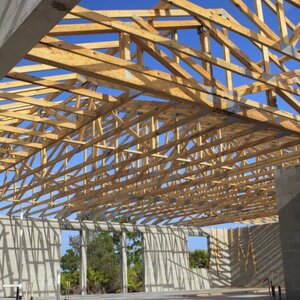Residential Real Estate News

U.S. Opportunity Zones Rebound in Q2
Residential News » Irvine Edition | By Michael Gerrity | August 17, 2023 7:28 AM ET
According to ATTOM's newly released second-quarter 2023 Opportunity Zones report, median single-family home and condo prices increased from the first quarter of 2023 to the second quarter of 2023 in 61 percent of Opportunity Zones around the U.S., and rose at least 5 percent in about half.
The increases reversed a brief fallback in values during the prior two quarters in a majority of zones, which sit in and around low-income neighborhoods where the federal government offers tax breaks to spur economic revival.
The renewed price growth continued a long-term pattern of trends in Opportunity Zones largely matching those in other neighborhoods around the U.S. Values in those areas also dipped from late 2022 into early 2023 before recovering in the second quarter. Changes in home values inside Opportunity Zones have been tracking closely with national patterns for at least the last three years - mostly rising in a sign of economic strength inside some of the country's most distressed communities.
By two key measures, Opportunity Zone markets even showed signs of rebounding slightly better than other neighborhoods around the country during the second quarter of this year. Median prices inside those zones rose more often at a faster pace than the nationwide gain both quarterly and annually.
"Another quarter and another sign of housing market strength. That was the story yet again in Opportunity Zones around the U.S. during the Spring buying season of 2023," said Rob Barber, CEO for ATTOM. "It doesn't seem to matter whether the national market is booming or cooling off. Prices are rising or falling at about the same pace inside Opportunity Zones as they are elsewhere around the U.S. - and even doing a little better in some ways. For sure, prices remain low in Opportunity Zones. But once again, home value trends present a positive note for investors considering using federal tax breaks offered to redevelop neighborhoods in need of revival."
Opportunity Zones are defined in the Tax Act legislation as census tracts in or alongside low-income neighborhoods that meet various criteria for redevelopment in all 50 states, the District of Columbia and U.S. territories. Census tracts, as defined by the U.S. Census Bureau, cover areas that have 1,200 to 8,000 residents, with an average of about 4,000 people.
As they have for many years, or even decades, typical home values in Opportunity Zones continued to fall well below those in most other neighborhoods around the nation in the second quarter of 2023. Median second-quarter prices were less than the U.S. median of $350,000 in 80 percent of Opportunity Zones analyzed. That was about the same portion as in earlier periods over the past year. In addition, median prices remained less than $200,000 in 49 percent of the zones during the second quarter of 2023.
Considerable price volatility also continued in Opportunity Zones, with median values either dropping or increasing by at least 5 percent in two-thirds of those locations from the first quarter of 2023 to the second quarter of 2023. That likely reflected the small number of sales in many zones.
Still, second-quarter trends showed that the earlier downturn in home values nationwide failed to cause a long-term slump in Opportunity Zones, despite their economic distress. That suggests that a decade of home-price run ups across the U.S. continues to leave a significant cluster of potential buyers with limited resources with no choice but to take a chance and purchase homes in the lowest-priced communities. The apparently healthy demand in the second quarter continued even as home-mortgage rates climbed back up toward 7 percent for 30-year loans this Spring, cutting into what buyers could afford.
"Opportunity Zones appear to still be enjoying the trickle-down effect of value spikes in mid-level markets that have likely priced marginal buyers out," Barber added. "With an ongoing tight supply of homes for sale pushing the trends even more throughout the country, there are no major signs that Opportunity Zones' price patterns will fall out of step with the national scenario in the near future."
High-level report findings:
- Median prices of single-family homes and condominiums increased from the first quarter of 2023 to the second quarter of 2023 in 1,977 (61 percent) of the Opportunity Zones around the U.S. with sufficient data to analyze, while decreasing or staying the same in 39 percent. Medians also were up from the second quarter of 2022 to the same period this year in 2,049 (55 percent) of those zones. (Among the 3,909 Opportunity Zones included in the report, 3,248 had enough data to generate usable median-price comparisons from the first quarter of 2023 to the second quarter of 2023; 3,704 had enough data to make comparisons between the second quarter of 2022 and the second quarter of 2023).
- Median values went up at least 5 percent quarterly in 52 percent of Opportunity Zones with sufficient data to analyze.
- But in a sign that Opportunity Zones did a bit better than the rest of the country, median prices were up year-over-year by at least 3 percent in a higher portion of those areas. They were up annually by that much in 50 percent of Opportunity Zones versus 45 percent of local markets in other parts of the country.
- Among states that had at least 25 Opportunity Zones with enough data to analyze during the second quarter of 2023, the largest portions of zones where median prices rose quarterly were in Minnesota (medians up from the first quarter of 2023 to the second quarter of 2023 in 76 percent of zones), Tennessee (75 percent), Alabama (68 percent), California (67 percent) and Indiana (67 percent). States where prices were up quarterly in the smallest portion of zones included Louisiana (median prices up quarterly in 45 percent of zones), Colorado (53 percent), Virginia (53 percent), Oregon (54 percent) and Texas (58 percent).
- States where median home values in Opportunity Zones were up most often year over year included Indiana (median prices up annually in 88 percent of zones), Massachusetts (82 percent), New Jersey (80 percent), Tennessee (80 percent) and Missouri (79 percent).
- Of the 3,909 zones in the report, 1,282 (33 percent) had median prices in the second quarter of 2023 that were less than $150,000. That was down from 36 percent of those zones a year earlier. Another 614 zones (16 percent) had medians in the second quarter of this year ranging from $150,000 to $199,999.
- Median values in the second quarter of 2023 ranged from $200,000 to $299,999 in 923 Opportunity Zones (24 percent) while they topped the nationwide second-quarter median of $350,000 in just 754 (19 percent).
- The Midwest continued in the second quarter of 2023 to have larger portions of the lowest-priced Opportunity Zone tracts.
- edian home prices were less than $175,000 in 66 percent of zones in the Midwest, followed by the Northeast (46 percent), the South (43 percent) and the West (6 percent).
- Median household incomes in 87 percent of Opportunity Zones analyzed were less than the medians in the counties where they were located. Median incomes were less than three-quarters of county-level figures in 55 percent of zones and less than half in 15 percent.
Sign Up Free | The WPJ Weekly Newsletter
Relevant real estate news.
Actionable market intelligence.
Right to your inbox every week.
Real Estate Listings Showcase
Related News Stories
Residential Real Estate Headlines
- U.S. Housing Hits Record Setting $47 Trillion in Total Value in June
- Mortgage Rates Continue Upward Climb in the U.S.
- Extreme Wind Gusts Drove Maui Wildfires Causing Billions of Property Destruction
- Home Price Gains Recorded in Many U.S. Metros in Mid-2023
- Ireland Residential Rents Jump 10.7 Percent Annually in Q2
- Mortgage Applications Dip in Early August
- U.S. Mortgage Credit Availability Dips in July
- Las Vegas Area Home Prices, Sales Remain Relatively Flat in July
- U.S. Homebuyer Monthly Payments Up 20 Percent Annually in July
- High Rates, Low Inventory Still Negatively Impacting Palm Beach Area Home Sales in June
- U.S. Housing Inventory Crunch Accelerated in July
- Despite Rising Rates, Texas Mortgage Industry Expresses Improving Outlook
- Foreign Buyers of U.S. Homes Falls to Lowest Levels on Record Says NAR
- Mortgage Applications Dip in Late July
- Greater Miami Residential Sales Down 18 Percent Annually in June
- U.S. Home Prices Uptick 3 Percent Annually in July
- Macau's Property Market Recovery Dampened by Interest Rate Hikes in 2023
- U.S. Mortgage Rates Rise Again in Late July
- Mortgage Delinquency Rates in U.S. Drop to Record Low in May
- Residential Rents in U.S. Continue Annual Decline in June
- U.S. Migration to Most Flood-Prone Areas Has Doubled Since the Pandemic
- Mortgage Rates Slightly Dip in Mid-July in the U.S.
- New Home Mortgage Applications Spike 26 Percent in June
- U.S. Home Sales Down 23 Percent in First Half of 2023 Says NAR
- Despite Rising Rate Concerns, Builder Confidence Edges Higher in July
- Just One Percent of Homes Have Changed Hands This Year in the U.S.
- Mortgage Rates Rise Again in U.S.
- Rent Growth for Single Family Homes Continues to Slow in May
- Home Values in U.S. Reach New Peaks in June
- Orlando Area Residential Sales Down 18 Percent Annually in June
- Homebuilders Tell Congress ESG Policies Harm Affordable Housing Production in the U.S.
- Globally, Waterfront Properties Enjoy a 118 Percent Price Premium in 2023
- U.S. Foreclosure Starts Increase 15 Percent in First Half of 2023
- U.S. Residential Asking Rents Still Close to Record High in June
- U.S. Housing Inventory Drops to Lowest Levels Since 1999, Says NAR
- Annual Home Price Growth in America Drops to 11 Year Low in May
- Southwest Florida Housing Markets Hit by Hurricane Ian Bouncing Back
- Mortgage Delinquencies Remain Near All-time Lows in U.S.
- Global Home Price Growth Slows to Lowest Levels Since 2015
- Mortgage Rates in U.S. Reach New High in 2023





